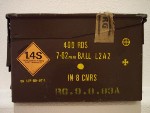Eric,
If you wanted to make a butt splice with a biscuit joiner, I'd do it over a framing member.If you reinforced the joint, as Mike said, with fiberglass, and handled carefully 'till glued to the frame, it would work fine too.
A half lap with the thickness you're using would be a good choice too. Try turning the wood so that the face grain runs up/down on the panel. I spliced three sections to get a 11-foot panel for the stripper. Long grain blends the joint away better than an end grain joint.
The butt joint method works for me, because I'm using thin, light ply. There's not much stress in the joint from the weight of the wood. I don't worry about the joint failing in the final structure, just during handling.

Mike's panel, 5' by 11', cut freehand, laminated in 'glass.

I joined the panels for the Stripper with half-laps, grain up/down.

A finished panel 4' by 11' also glassed. You could cut the sections at 5', but there would be waste! However, I would not hesitate to use this panel as is, alone for the whole wall, if you weren't using an insulated frame.















 I think you must be th Norm Abbrams of teardrops.
I think you must be th Norm Abbrams of teardrops. 